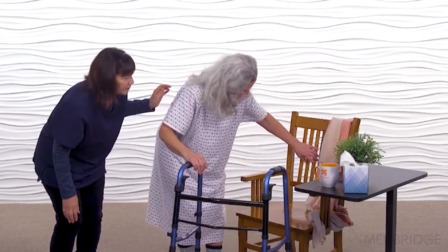Dementia Care: Helping as Abilities are Failing and Life is Ending
Presented by Teepa Snow
12-Month Subscription
Unlimited access to:
- Thousands of CE Courses
- Patient Education
- Home Exercise Program
- And more
This course is designed to provide knowledge and skills for clinicians and direct care providers that will enhance the quality of life, reduce the level of distress, and improve the caregiver's ability to interact and communicate effectively with the person living with dementia as the condition advances toward the end of life. A focus of the course will be on the symptoms and signals that someone will demonstrate and should be noticed as indicators of changing status and need for an alternate care plan and different interventions to enhance comfort and meet new needs and preference. The goal is that caregivers will partner with the person and other members of the care team to support the individual in either staying when finding comfort and connections or letting go and transitioning through the end of life when it is time.
Meet your instructor

Teepa Snow
Teepa Snow is an advocate for those living with dementia and has made it her personal mission to help families and professionals better understand how it feels to be living with such challenges and seeks to change and improve life for everyone involved. Her practice has included everything from neuro-intensive care units in…
Chapters & learning objectives

1. What Do You Need to Know About End of Life Care With Someone Living with Dementia?
This chapter will describe & discuss terminology associated with End of Life Care. The chapter will also discuss why Dementia is different as the end of life approaches & the importance of health promotion. Finally, this chapter go over the differences between acute illness and dementia in end of life stages.

2. What Does End of Life Care Mean for You and For Them?
This chapter will connect visual images of brain changes with common behavioral symptoms and loss of abilities and preserved abilities including memory, language, sensation, movement skills, vision, reasoning, awareness of time-place-person-situation, core body-brain connections and function, and impulse control. This chapter also describe & discuss advanced state dementia brain changes, body changes, physiological changes, and interaction emotional changes that routinely occur.

3. What is Comfort Care and How do You do it?
This chapter will role play common behavioral symptoms and lost and preserved abilities including memory, language, sensation, movement skills, vision, reasoning, awareness of time-place-person-situation, core body-brain connections and function, and impulse control. We will review typical abilities and impairments by using role plays – focusing on lost and preserved skills, common interests, typical behaviors, and effective cues to provide help and support at Amber, Ruby, and Pearl states of ability – with team members providing assistance as needed.

4. How Do You Bring the World Into the Shell?
Building on the last chapter, final chapter of the series will present a rationale and rehearse Positive Physical Approach techniques modified for Ruby and Pearl states - to improve initial contact, cooperation, participation, and interaction when a client/patient has a dementing illness and may also be experiencing a delirium within the context of end of life care.
More courses in this series

Overview of Dementia: Alzheimer's, Vascular, Lewy Body, Frontotemporal
Teepa Snow

Dementia Care: Understanding Common Symptoms for Better Care
Teepa Snow

Dementia Care: Reducing the Risk of Challenging Situations
Teepa Snow

Dementia Care: Coping with Challenging Situations in Support & Care
Teepa Snow

Dementia Care: Using the GEMS States Model for Personal Care Tasks
Teepa Snow

Dementia Care: Communicating When Someone Has Dementia
Teepa Snow

Dementia Care: Offering Engagement for People Living With Dementia
Teepa Snow

Dementia Care: Helping as Abilities are Failing and Life is Ending
Teepa Snow